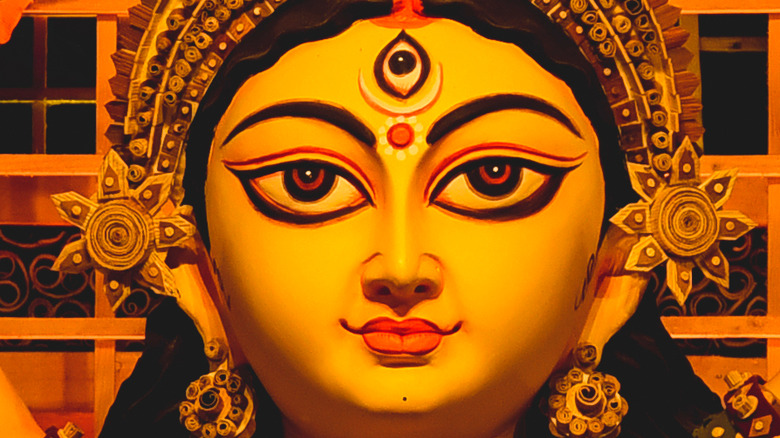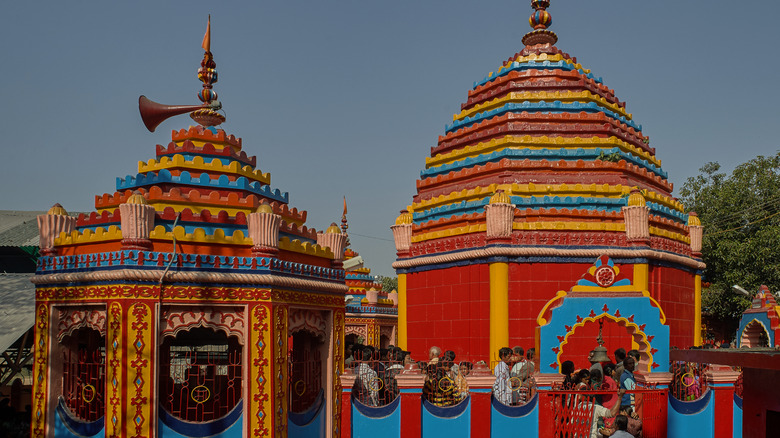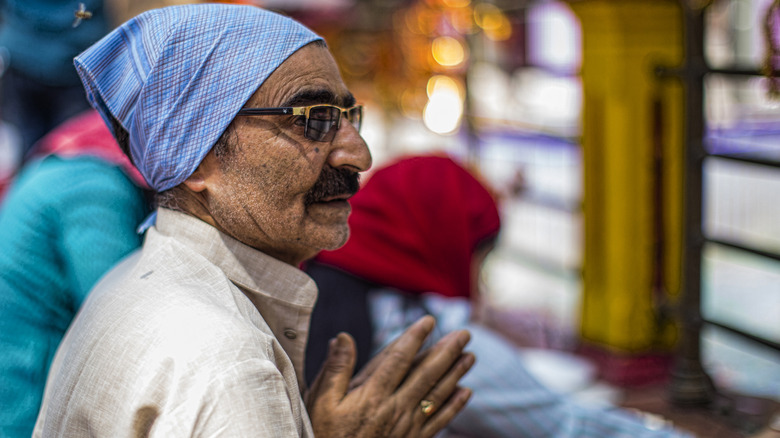Chinnamasta Is A Hindu Goddess Known For This Distinct Feature
Some gods and goddesses of the old world have some extremely bizarre and unsettling characteristics. Greek mythology, for instance, is chalked with some truly remarkable entities who appear like something straight out of a deranged nightmare cooked up by Tim Burton. We all know about Medusa, the magnificent and terrifying monster who sported a head of ravenous snakes. A single glance into her icy eyes would irrevocably turn the unfortunate looker into stone — best keep your eyes directed elsewhere if you ever find yourself alone in a room with her. Then there's the harrowing Hydra, a nine-headed serpent who could exponentially regenerate itself after being decapitated. Speaking of decapitation ...
Let's take a look at the other side of the old world, far beyond the borders of Greece and into India. The Hindu gods and goddesses stand out amongst the array of fantastical beings as some of the most perplexing and jarring creatures you can find in the archives of ancient religions. Have you ever heard of Chinnamasta? According to Vedic Feed, the Hindu goddess of wisdom and transformation is one of the more obscure and incognito entities within the spiritual practice. Chinnamasta — sometimes called Chhinnamastika or Prachanda Chandika – is often depicted totally nude, covered in a thick coat of blood, and sporting a serpent strung around her neck. She also carries her own severed head around wherever she goes.
Chinnemasta carried her severed at her side
"Chinnamasta" translates directly to, "the one with a severed head," as Hindu Facts notes. According to ancient Hindu doctrines, she spawned from the goddess Parvati. While bathing in the river, Parvati was accompanied by Dakini and Varnini, and when the latter two became hungry, they beseeched her to feed them. By means of obliging their request, she cut off her own head and directed the spurting jets of blood into the mouths of her faithful attendees. The third stream of blood went into the mouth of her newly severed head. Furnishing herself as well is the least she deserves for separating her own head from her body, right? From thenceforth, she was reborn as Chinnamasta (via Vedic Feed).
Drinking the blood of an ethereal being is a strange way to satisfy one's hunger, but it was Chinnamasta's claim to fame. It almost seems like something out of Dante's Inferno, doesn't it? However, Chinnamasta certainly isn't reputed as being a malevolent monster from the fiery depths of hell. There are various ways that practitioners of Hinduism worship/interpret her presence in their doctrine, but they are all share a generally benevolent perspective that regards Chinnamasta as a gracious giver of life and a symbol of composure/control (per Vedic Feed).
The worship of Chinnamasta
While the notion of severing one's own head is rather macabre and could be construed as gratuitous, worshippers see Chinnamasta as both a giver and taker of life, and essentially view her as the ultimate transcendence of the cycle between life and death. Self-sacrifice and mindful control are the tenants of her being, according to Sivasakti. Chinnamasta is often shown looming over two people in the midst of intercourse in her portraits/visual depictions: Rati, the goddess of sexual desire, and Kama, the god of love. As the two share congress, Chinnamasta's presence is designed to symbolize control over love and compulsions of intimacy (via Vedic Feed).
There are only a small number of shrines and temples in India that are devoted to the worship of Chinnamasta. Otherwise, tantric meditation is the more personal conduit that practitioners utilize in order to obtain the powers she has to offer, according to Vedic Feed.


